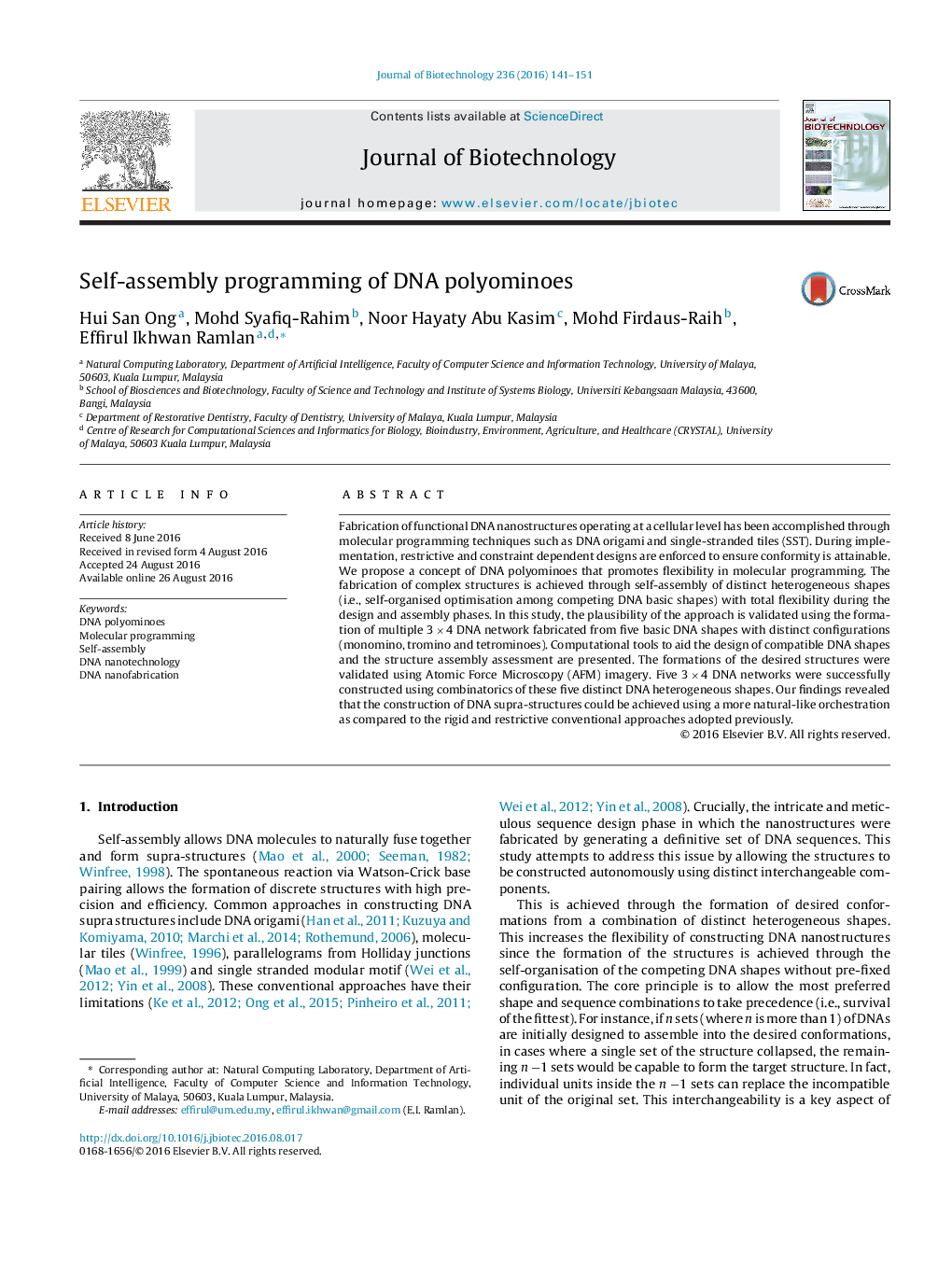| کد مقاله | کد نشریه | سال انتشار | مقاله انگلیسی | نسخه تمام متن |
|---|---|---|---|---|
| 6452271 | 1417009 | 2016 | 11 صفحه PDF | دانلود رایگان |

- A self-organised system of fabricating DNA nanostructures called “DNA Polyominoes” is proposed.
- The fabrication of complex DNA nanostructures is accomplished through the process of molecular self-assembly; an orchestration of unique heterogeneous shapes to form the desired DNA structures.
- It conceptualizes the Tetris game where each shape can be rotated and plugged interchangeably based on its modularity.
- Two computational tools were developed; to extend the DNA heterogeneous shapes for intermolecular binding and to simulate and resolve the combinotorics of intermolecular binding between those shapes.
- The plausibility of the approach is validated using the formation of 3Â ÃÂ 4 DNA rectangles using five basic DNA shapes with multiple configurations.
Fabrication of functional DNA nanostructures operating at a cellular level has been accomplished through molecular programming techniques such as DNA origami and single-stranded tiles (SST). During implementation, restrictive and constraint dependent designs are enforced to ensure conformity is attainable. We propose a concept of DNA polyominoes that promotes flexibility in molecular programming. The fabrication of complex structures is achieved through self-assembly of distinct heterogeneous shapes (i.e., self-organised optimisation among competing DNA basic shapes) with total flexibility during the design and assembly phases. In this study, the plausibility of the approach is validated using the formation of multiple 3Â ÃÂ 4 DNA network fabricated from five basic DNA shapes with distinct configurations (monomino, tromino and tetrominoes). Computational tools to aid the design of compatible DNA shapes and the structure assembly assessment are presented. The formations of the desired structures were validated using Atomic Force Microscopy (AFM) imagery. Five 3Â ÃÂ 4 DNA networks were successfully constructed using combinatorics of these five distinct DNA heterogeneous shapes. Our findings revealed that the construction of DNA supra-structures could be achieved using a more natural-like orchestration as compared to the rigid and restrictive conventional approaches adopted previously.
Journal: Journal of Biotechnology - Volume 236, 20 October 2016, Pages 141-151